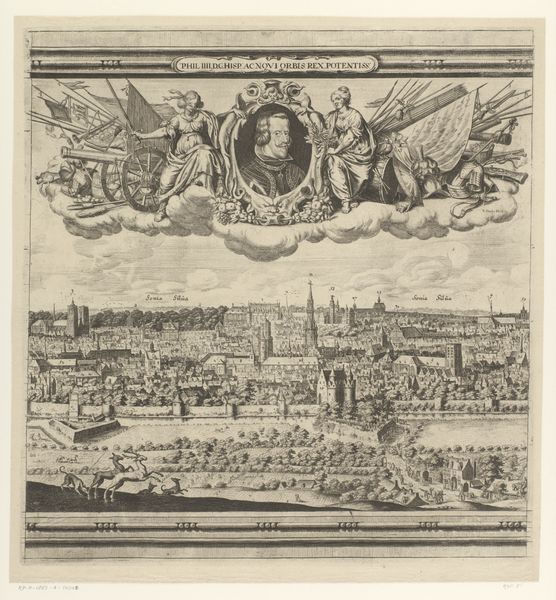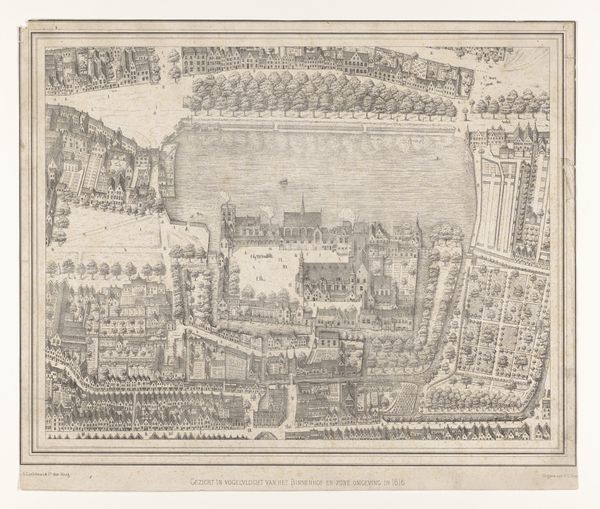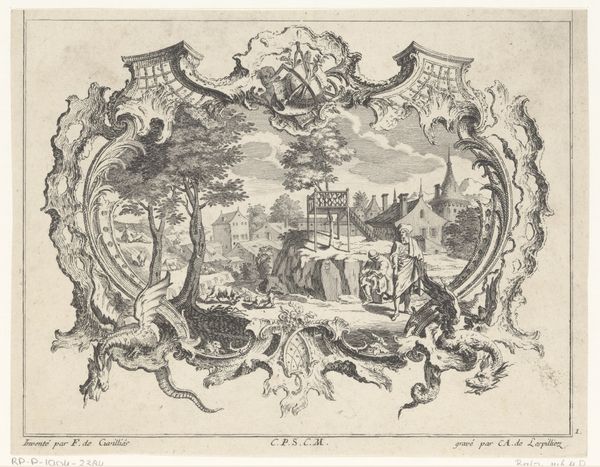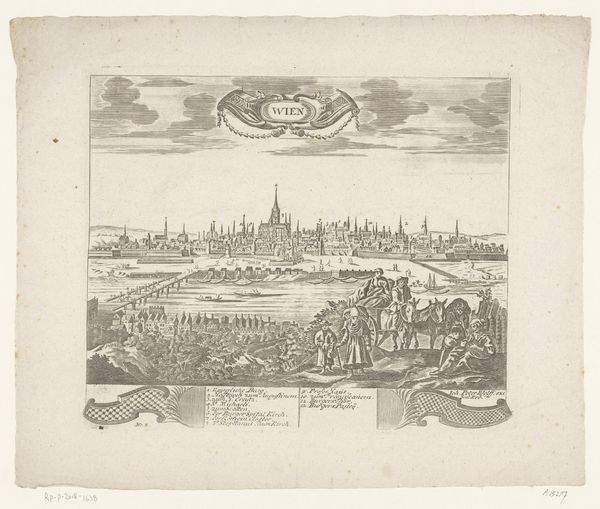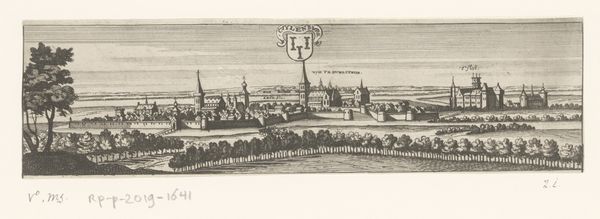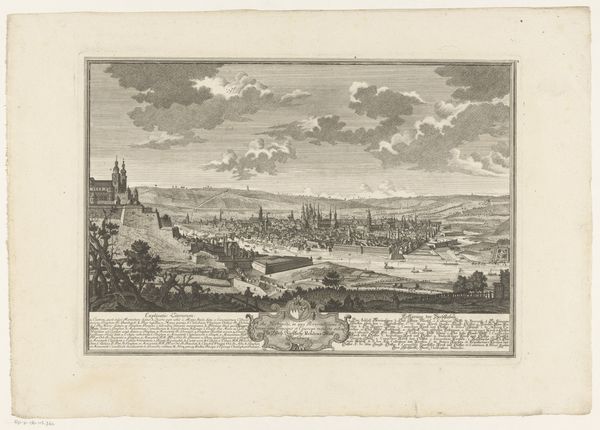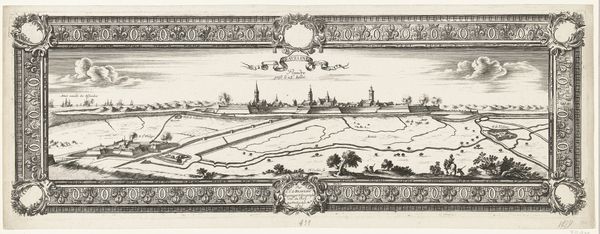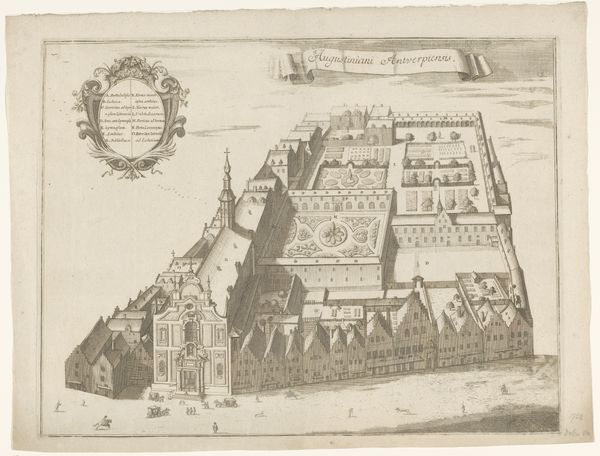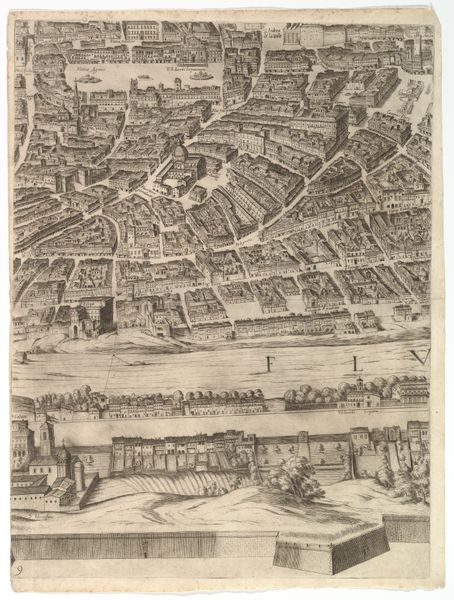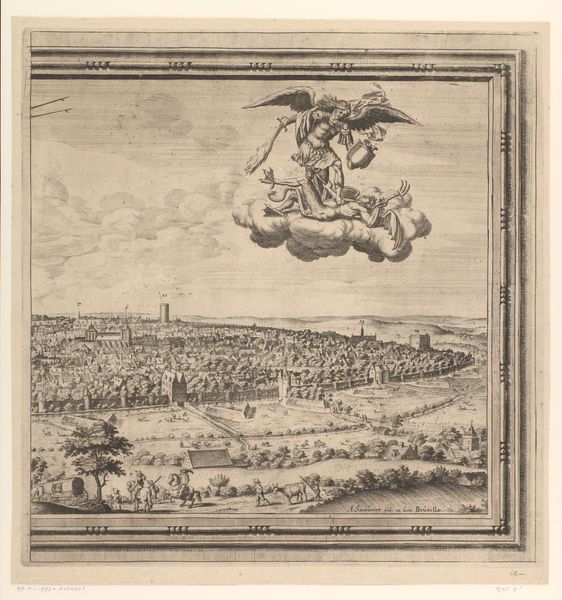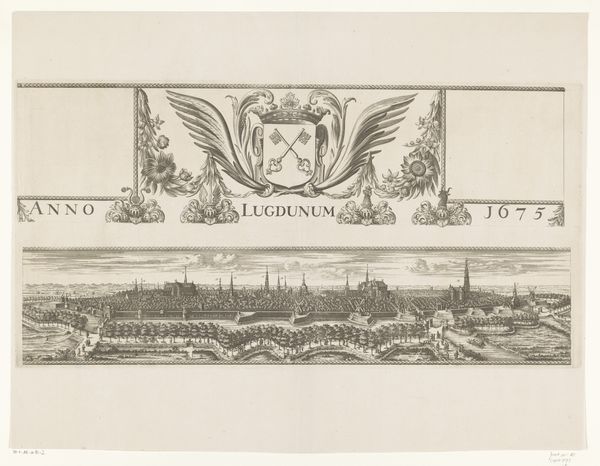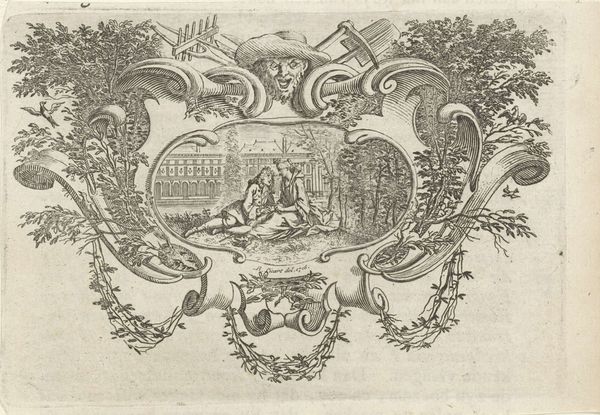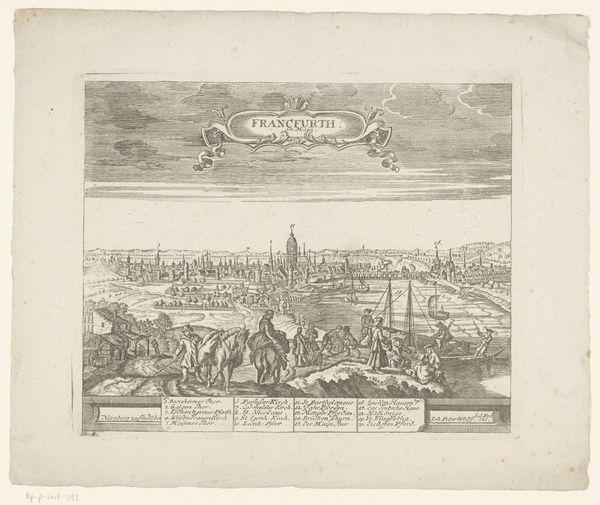
print, engraving
#
baroque
# print
#
old engraving style
#
landscape
#
cityscape
#
engraving
Dimensions: height 433 mm, width 1244 mm, height 428 mm, width 418 mm, height 433 mm, width 411 mm, height 429 mm, width 415 cm
Copyright: Rijks Museum: Open Domain
Editor: This is Abraham Dircksz. Santvoort’s “View of Brussels in Three Parts,” an engraving from 1640 currently housed at the Rijksmuseum. It's quite striking; the tripartite composition combined with the level of detail give the entire artwork a somewhat majestic and overwhelming character. What symbolic meanings do you recognize in it? Curator: Immediately, the triumvirate division hints at a complex layering of perspectives, almost like witnessing the city through different lenses of power: earthly, divinely ordained, and perhaps a strategically controlled view. How do these separate panels affect the continuity of the overall image, do you think? Editor: They almost feel like acts in a play – distinct but linked in a larger narrative. The central panel especially, with the portrait framed by angels and clouds, appears almost separate from reality. Curator: Precisely. Note the central panel and its floating figures above the cityscape. These evoke a celestial endorsement, legitimizing the earthly rule. Observe also, how heraldic symbols – emblems of lineage, authority, and promises – punctuate each section? The recurring motifs point to a specific set of virtues or claims being visually propagated. Does that then influence your reading of the sections featuring the city? Editor: It makes me consider how much of what I'm seeing is literal and how much is designed to project a specific image of Brussels, maybe as a thriving or divinely blessed place. Curator: Exactly. Now consider how the scale of the figures relate to the cityscape and its own place in a landscape. Even with some natural features visible, they exist secondary to a celebration of civilization. These weren’t neutral records, but strategic assertions of identity and power projected through careful image selection. Has it altered how you perceive the piece? Editor: Definitely. I was initially impressed by the detail, but now I realize it's all contributing to a message, building something beyond just a visual representation of the city. Curator: And that, perhaps, reveals the lasting power and continuity that carefully crafted imagery holds.
Comments
No comments
Be the first to comment and join the conversation on the ultimate creative platform.
